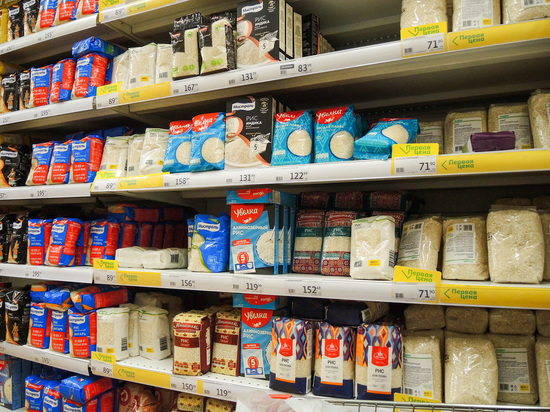Experts spoke about the anomaly in prices for popular cereals
[ad_1]

As you know, a holy place is never empty. The driver of the increase in prices among cereals in the current autumn-winter period may not be buckwheat, which would have been quite familiar to us in previous crises, but rice. According to the forecast voiced by the Grain Union, it may rise in price by 10%. In general, the usual story for Russia: either thick or empty …
According to the President of the Grain Union of Russia, Arkady Zlochevsky, in the autumn-winter period, buckwheat and rice will change places – that is, their “historical roles”. Buckwheat, which rises in price with every economic shock (this was the case in 2009, and in 2014, and in 2020), will become cheaper this time due to a bountiful harvest. But rice, which has never really bothered domestic consumers, will, on the contrary, begin to grow in price. The fact is that in the Krasnodar Territory they could not sow this crop in the planned volumes.
Actually, such events were predicted in the spring. Russia, which exports about 200 thousand tons of its rice to neighboring countries, closed exports from July 1 until the end of the year. It is expected that this year’s harvest will be about 900,000 tons, while in normal years – 1.1 million tons.
However, even a million is more than enough for domestic consumption, it will not disappear from the shelves. Well, the fact that this cereal will rise in price, so how can you surprise us like that?! But buckwheat, as promised in the Grain Union, will become cheaper…
So far, however, the price tags in supermarkets for these products remain unshakable. A 900-gram package of rice from 125 rubles to 230. And buckwheat with the same packaging – 140-165 rubles.
However, should all this be considered a grain anomaly? According to experts, rice should cost more than buckwheat anyway. This is a more high-tech and labor-intensive crop to grow. Rice fields are not filled with water from a hose, like, say, cucumber beds. Here, a complex reclamation system is needed, sluices that open and close to maintain a certain water level on the plantations. We need special combines for harvesting, which are practically not produced by our industry. In general, when in certain periods buckwheat in stores cost more than rice – all this was against economic laws. And the fact that rice will rise in price should not surprise anyone.
By the way, the current crop failure of rice is largely due to the accident at the Fedorovsky hydroelectric complex in the Krasnodar Territory. It happened back in April. This hydroelectric complex irrigated rice paddies in the Krasnoarmeisky, Kalininsky, Krymsky and Abinsk regions. In total, the region supplies about 70% of this product to the domestic market. It is clear that in April they began to quickly restore the hydroelectric complex. And even strengthened to sow the planned 120 thousand hectares. But in mid-May, it fell again.
As a result, it turned out that about 40% of rice plantations in the Krasnodar Territory were not sown. Accordingly, they did not receive a harvest. According to information from the field, today active work is underway at the hydroelectric complex, but they will be carried out for more than one year. It is possible that there will be a gap in the cultivation of this crop for an indefinite period.
However, according to Igor Abakumov, Candidate of Economic Sciences, host of the Rural Hour program, Russians should not get too hung up on the rise in price of rice. This is not the main food for our table.
– We grow short-grain rice, which is suitable only for making rice porridge. And even among children it is not very popular, not to mention adults. As a rule, we buy rice for pilaf, but this is long-grain rice, it is imported. And the pilaf season in Russia has already ended.
– Importing countries also have crop failures, in India, for example, there was a drought, exports from there are prohibited …
Many countries grow long-grain rice: Vietnam, Thailand, Cambodia, Laos. These are all states that are quite friendly to us. So we will not be left without import supplies. Well, as for buckwheat, buckwheat, a very high harvest of this cereal has been harvested, everywhere they predict a sharp decrease in retail prices.
– But so far it is not visible. In the store, depending on the manufacturer and retail chains, it costs from 140 rubles per kilogram to 165. Why?
– Today, farmers sell buckwheat for 20-22 rubles per kilogram. And in retail it is still 7-8 times more expensive. I myself am interested in how the FAS, the Ministry of Agriculture or the Ministry of Economic Development will comment on these prices. Will retail chains make profit on buckwheat or not?
The question is really interesting. Also for the reason that since the wholesale purchases of buckwheat from the peasants have collapsed, it means that next year they will sow it much less. And buckwheat in terms of rising prices will again break ahead.
[ad_2]
Source link






